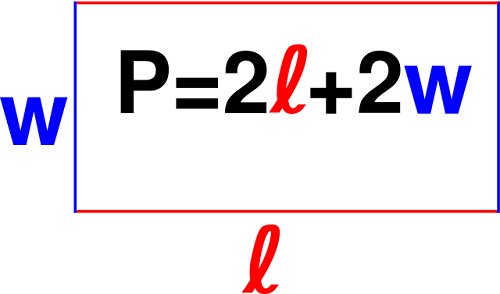Difference between Parameter and Perimeter
The words ‘parameter’ and ‘perimeter’ are often confused because they are very similar in spelling and pronunciation. They both end in ‘meter’ and only the vowel sounds in the first part sound different. To make matters worse, some people will use the two terms interchangeably in circumstances where the meanings do not overlap. Despite this and some overlapping meaning, they are two separate words.
A perimeter is, to give the broadest definition, the boundary of an area. A perimeter of a building, for example, would be its outer edge. This is also true of any given space, since an area might be defined by where its boundaries are instead of by what is inside it. The perimeter might also mean something that is forming the perimeter, such as a garden wall. Similarly, in military scenarios, it might refer specifically to a defensive barrier around an area.
In mathematics, the perimeter is specifically the length of the boundary, meaning the sum of all the sides.
The word ‘parameter’ has a number of meanings across various fields. Most of its meanings are fairly specialized. The broadest definition would be that a parameter is something that is crucial in identifying what an object is or is essential to what makes it that type of object. That is how it is most often used outside of specialized terms.
In mathematics and physics, a parameter is a variable that is kept constant throughout the equation or experiment. What that means is that it is something that has to be kept at a certain level in order for the equation or experiment to work, even though it normally could be changed. For instance, if the variable x has to be kept at a value of three even though the equation could be solved with other numbers, then x = 3 would be a parameter.
In programming, the meaning is slightly different. It is still a variable, but it is one that is input into the program while the program is running. If someone made a program that would calculate the amount of tax owed on a number of dollars, then the number of dollars put in to the program would be a parameter. There are two things called a parameter: first is the variable that stands in for the number, and the second is the number itself. In some cases, the first is called a parameter while the second is called an argument. Other times, but not as often, the first will be called a ‘formal parameter’ and the second will be called an ‘actual parameter’.
The meanings of ‘parameter’ and ‘perimeter’ might overlap in some cases. A parameter is something that identifies what an object is. If the object were defined solely by its perimeter, then the perimeter might count as a parameter. Still, this should only be used when it is important that the perimeter defines the area; otherwise, it will just look wrong.
However, this is not often how the two words are confused. Most often, people will use ‘parameter’ when they mean ‘perimeter’ because they make the mistake and do not correct it. One common cause is the spellcheck error: spellchecks only correct spellings that do not resemble words, with unlikely words sometimes being caught if they make the sentence a fragment.
To summarize, the word ‘perimeter’ means the outside boundary of an area. A parameter is something that identifies what a thing is or what makes it that thing, with a couple more meanings in the fields of mathematics and programming. ‘Parameter’ is more likely to be used when someone means ‘perimeter’, but this is an incorrect use of the word.
- Differences Between Woods and Forest - August 31, 2016
- Differences between Novel and Novella - August 28, 2016
- Difference Between Sail and Sale - August 13, 2016
Search DifferenceBetween.net :
Leave a Response
References :
[0]https://en.wikipedia.org/wiki/Perimeter

